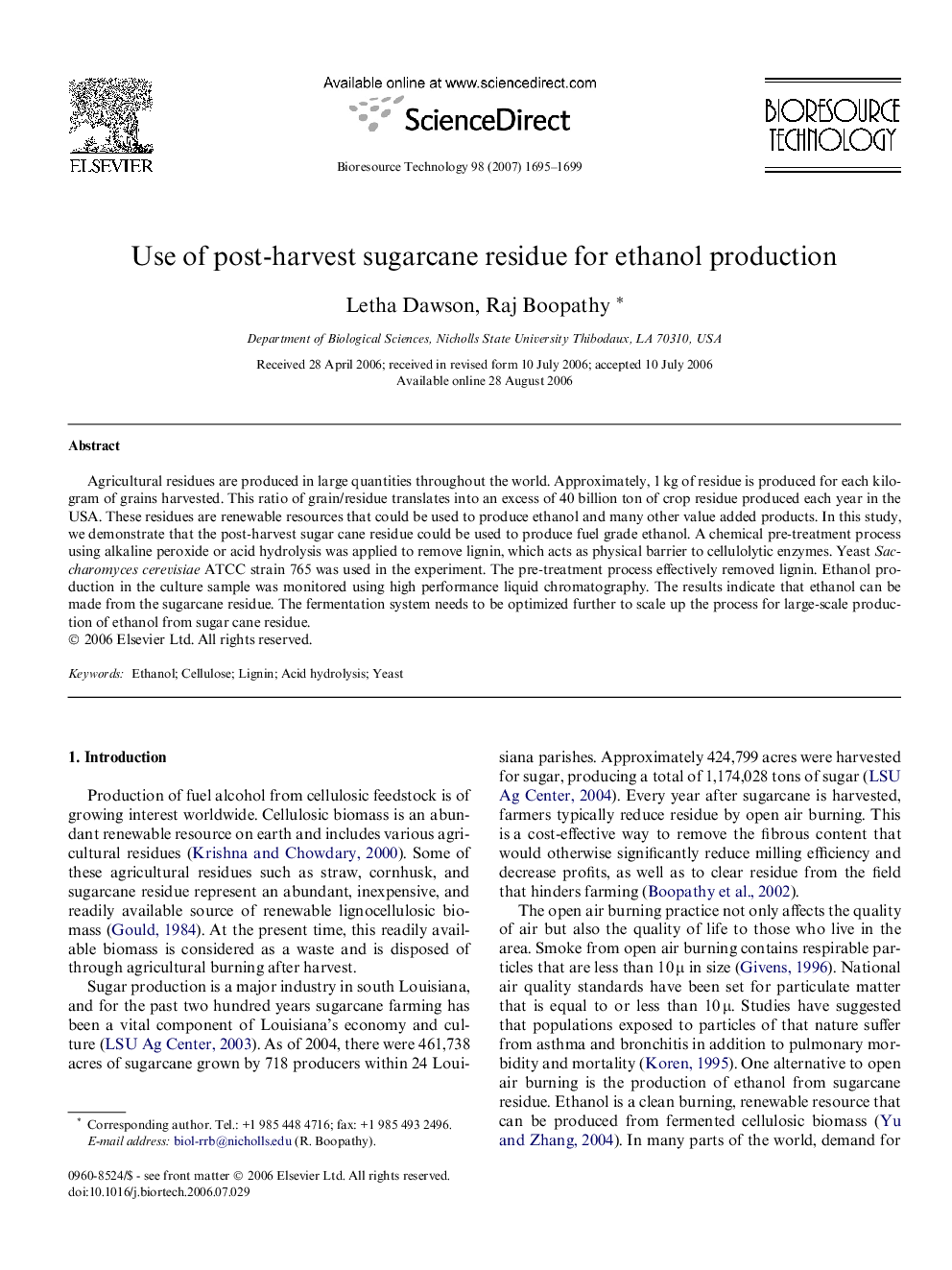| Article ID | Journal | Published Year | Pages | File Type |
|---|---|---|---|---|
| 686480 | Bioresource Technology | 2007 | 5 Pages |
Agricultural residues are produced in large quantities throughout the world. Approximately, 1 kg of residue is produced for each kilogram of grains harvested. This ratio of grain/residue translates into an excess of 40 billion ton of crop residue produced each year in the USA. These residues are renewable resources that could be used to produce ethanol and many other value added products. In this study, we demonstrate that the post-harvest sugar cane residue could be used to produce fuel grade ethanol. A chemical pre-treatment process using alkaline peroxide or acid hydrolysis was applied to remove lignin, which acts as physical barrier to cellulolytic enzymes. Yeast Saccharomyces cerevisiae ATCC strain 765 was used in the experiment. The pre-treatment process effectively removed lignin. Ethanol production in the culture sample was monitored using high performance liquid chromatography. The results indicate that ethanol can be made from the sugarcane residue. The fermentation system needs to be optimized further to scale up the process for large-scale production of ethanol from sugar cane residue.
